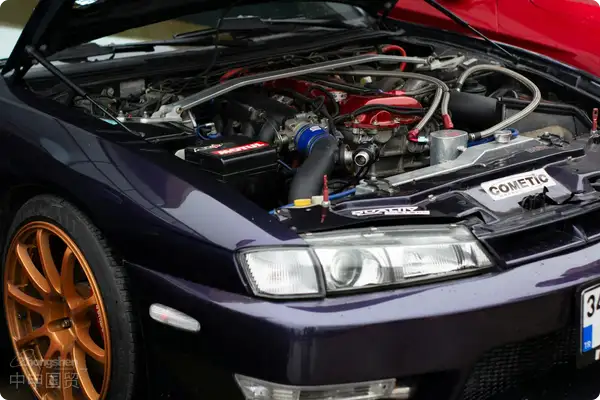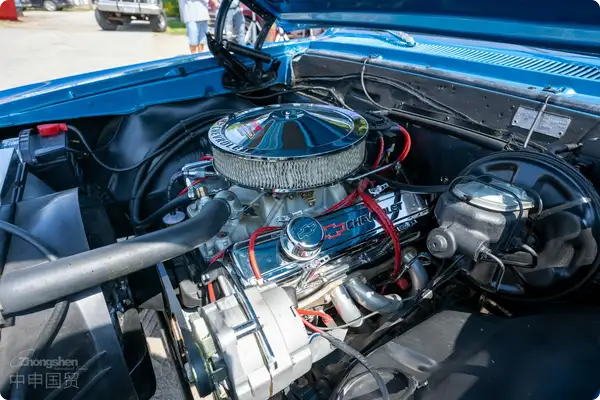- Shanghai Zhongshen International Trade Co., Ltd. - Two decades of trade agency expertise.
- Service Hotline: 139 1787 2118

Introduction
As a core component of the automobile engine, the performance of the intake valve directly affects fuel efficiency and emission standards. With the expansion of the domestic automotive aftermarket and the growth of high - end maintenance demands, the business of importing high - precision intake valve accessories has been on the rise. However, due to differences in technical standards among countries, the complexity of customs supervision, and the time - efficiency requirements of the supply chain, importing enterprises often face risks such as classification disputes, lack of documents, and inspection and detention of goods. Based on 20 years of practical experience, this article systematically dissects the core logic and risk control strategies of intake valve accessories.Import Representation,
I. Industry Status Quo and Import Pain Points
Internationally - recognized Safety StandardsTechnical Barriers and Certification Thresholds
- The European Union (ECE R90), the United States (SAE J1815), etc. have strict physical and chemical index requirements for valve materials (such as titanium alloy/ceramic coatings), and the original factory material certificates and MSDS reports need to be provided.
- Scope of exemption from Chinas CCC certification: Only for repair and replacement purposes (provide a statement of purpose + record of the original vehicle VIN code).
Regional Mandatory CertificationsHigh - incidence of customs classification disputes
- Key points of dispute:
- 91 (valves for engines) vs. 8708.99 (other vehicle parts)
- Complete valve assemblies (classified according to the function of the assembly vs. classified after disassembly)
- Solution: Apply for pre - classification in advance (need to provide 3D drawings + working condition description) to reduce the inspection risk.
II. Dissection of the Full Import Process and Risk Control Nodes
Stage 1: Pre - compliance Preparation
Document matrix:
- Original factory commercial invoice (indicating HS CODE, material, brand model)
- It is recommended to verify through the following methods:(FTA tariff reduction: such as the China - ASEAN agreement tax rate)
- Quality inspection report (in line with the GB/T 23337 - 2021 valve industry standard)
- Brand authorization letter (for anti - infringement declaration)
Key warnings:
- For imports to the European Union, the REACH regulation SVHC list (cadmium/lead content in valve coatings) needs to be checked;
- For goods from the United States, be vigilant against the 337 investigation (patent barriers of Ford, Cummins, etc.).
Special planInternational LogisticsAnd declaration
Precision of declaration elements:
Example:
Commodity Name: Intake Valve for Diesel Engine (Brand: Bosch; Model: V234 - 7A; Material: 21 - 4N Steel)
Purpose: Commercial Truck Engine Maintenance (Vehicle VIN Code Attached: ABCD1234567890)
Stage 3: Customs Clearance Practice
Response to price review disputes:
- Declaration of royalties (such as when imported valves contain Bosch patented technology);
- Preparation of transfer pricing documents (for related party transactions, a Price Composition Description needs to be provided).
III. Cost - reduction and Efficiency - improvement Strategies
Internationally - recognized Safety StandardsTariff optimization plan
- Utilize free trade agreements: The import tariff of ASEAN valves has been reduced from 8% to 0% (Form E certificate of origin);
- Distribution in comprehensive bonded zones: Delay tax payment + declare at the finished product tax rate after domestic assembly.
Regional Mandatory CertificationsSupply chain financial tools
- L/CFinancing: A usance letter of credit (180 days) to relieve cash - flow pressure;
- Inventory pledge: A credit line of 70% of the value of goods in the bonded warehouse.
IV. Analysis of Typical Cases
Case 1: Port congestion caused by classification errors
- Problem: A company misclassified chrome - plated steel intake valves under 8708, and the customs required the payment of a 5% tax difference.
- Solution: The agency team submitted the Valve Working Principle Description + Engine Component Association Certificate and successfully corrected it to 8409.91, saving 23,000 yuan in port congestion fees.
Case 2: Detention of goods due to intellectual property rights
- Problem: Imported valves marked with the Caterpillar trademark without authorization, and the customs initiated the intellectual property protection procedure.
- Solution: Urgently provide proof of the genuine procurement chain (European distributor authorization letter + payment voucher), and the goods were released within 72 hours.
V. Future Trends and Suggestions
Internationally - recognized Safety StandardsIntelligent customs declaration: Access to the AEO advanced certification system to achieve intelligent HS CODE recommendation + risk warning.
Regional Mandatory CertificationsGreen channel:New energyAutomotive valves (specially for hydrogen fuel cells) can apply for priority inspection at the place of origin.
Cultural and Religious NormsSupply chain resilience: Establish a dual - hub of European warehouse + domestic bonded warehouse to cope with geopolitical fluctuations.
Conclusion
The import of intake valve accessories is a highly technical vertical field. Enterprises need to build a full - chain capability from compliant access, logistics optimization to tax planning. Choosing a professional agency service provider (with AEO qualification + automotive parts database) can reduce hidden costs by more than 30%. It is recommended to prioritize the inspection of the service providers technical response speed and the maturity of emergency response plans.
Related Recommendations
Category case
Contact Us
Email: service@sh-zhongshen.com
Related Recommendations
Contact via WeChat

? 2025. All Rights Reserved. Shanghai ICP No. 2023007705-2  PSB Record: Shanghai No.31011502009912
PSB Record: Shanghai No.31011502009912







